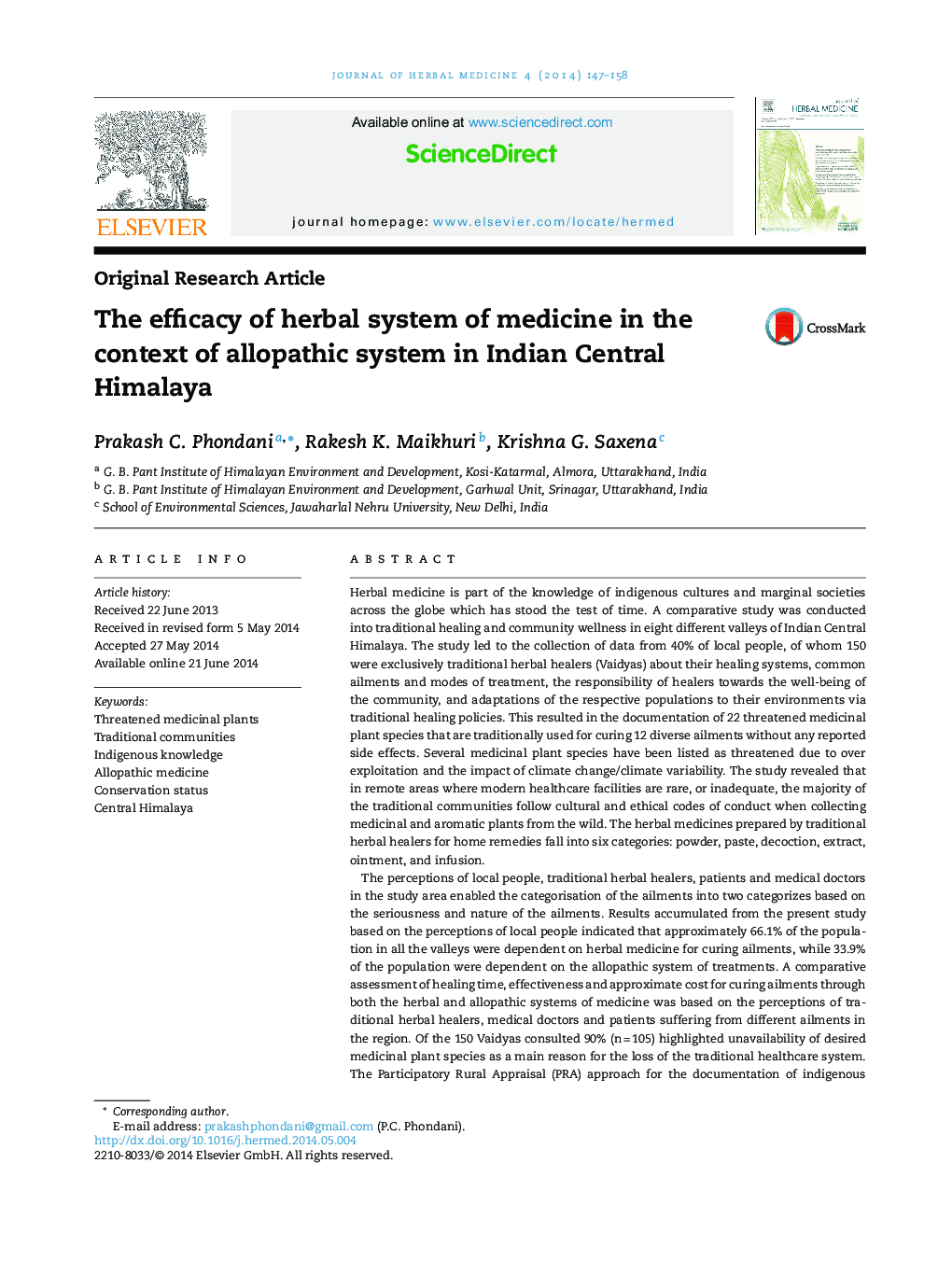| کد مقاله | کد نشریه | سال انتشار | مقاله انگلیسی | نسخه تمام متن |
|---|---|---|---|---|
| 2484067 | 1114286 | 2014 | 12 صفحه PDF | دانلود رایگان |
Herbal medicine is part of the knowledge of indigenous cultures and marginal societies across the globe which has stood the test of time. A comparative study was conducted into traditional healing and community wellness in eight different valleys of Indian Central Himalaya. The study led to the collection of data from 40% of local people, of whom 150 were exclusively traditional herbal healers (Vaidyas) about their healing systems, common ailments and modes of treatment, the responsibility of healers towards the well-being of the community, and adaptations of the respective populations to their environments via traditional healing policies. This resulted in the documentation of 22 threatened medicinal plant species that are traditionally used for curing 12 diverse ailments without any reported side effects. Several medicinal plant species have been listed as threatened due to over exploitation and the impact of climate change/climate variability. The study revealed that in remote areas where modern healthcare facilities are rare, or inadequate, the majority of the traditional communities follow cultural and ethical codes of conduct when collecting medicinal and aromatic plants from the wild. The herbal medicines prepared by traditional herbal healers for home remedies fall into six categories: powder, paste, decoction, extract, ointment, and infusion.The perceptions of local people, traditional herbal healers, patients and medical doctors in the study area enabled the categorisation of the ailments into two categorizes based on the seriousness and nature of the ailments. Results accumulated from the present study based on the perceptions of local people indicated that approximately 66.1% of the population in all the valleys were dependent on herbal medicine for curing ailments, while 33.9% of the population were dependent on the allopathic system of treatments. A comparative assessment of healing time, effectiveness and approximate cost for curing ailments through both the herbal and allopathic systems of medicine was based on the perceptions of traditional herbal healers, medical doctors and patients suffering from different ailments in the region. Of the 150 Vaidyas consulted 90% (n = 105) highlighted unavailability of desired medicinal plant species as a main reason for the loss of the traditional healthcare system. The Participatory Rural Appraisal (PRA) approach for the documentation of indigenous knowledge and conservation of medicinal plants was also highlighted as an appropriate measure for the management of these resources. The present paper aims to provide a practical example of sustainable utilization of medicinal and aromatic plants for sustaining the traditional healthcare system and scientific validation of available knowledge before its commercialization.
Journal: Journal of Herbal Medicine - Volume 4, Issue 3, September 2014, Pages 147–158
